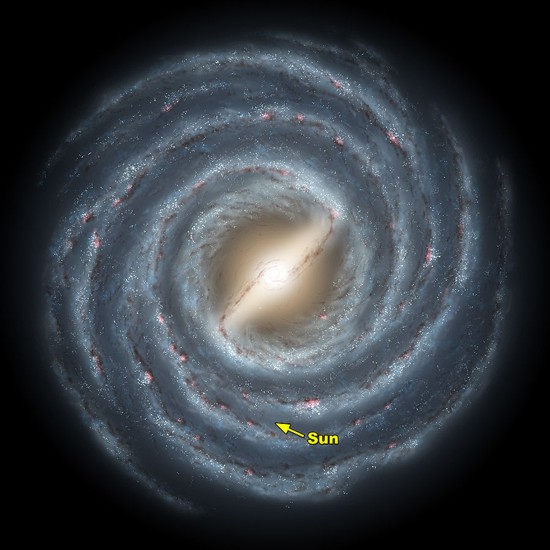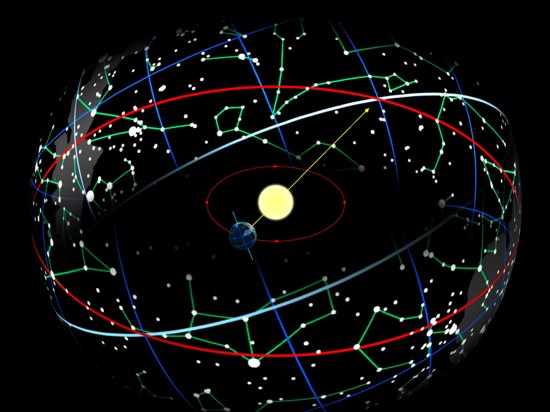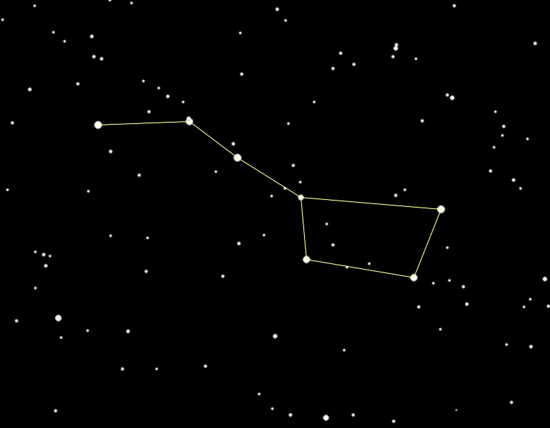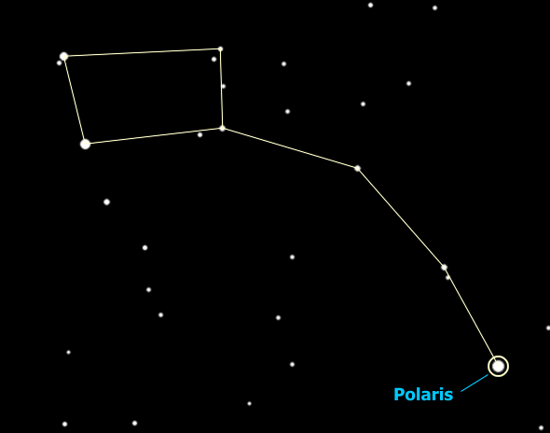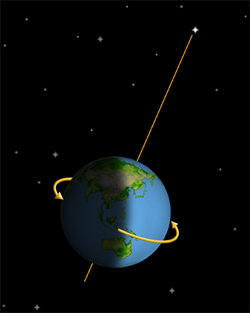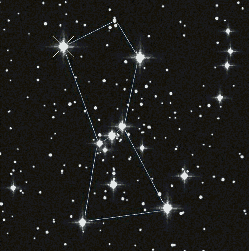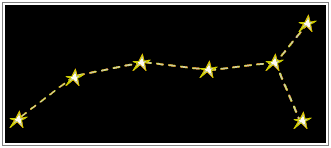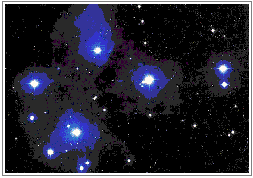
| SAPTARISHIS, MANU AND ASTRONOMY The concepts of Aryans are Scientifically proven and we can also call it as a way of life.
What
you are going to read is explained in a very simple manner. I could
have written in deep explaining about the sun, the degrees, other
planets and a lot of things but it would complicate things and my
aim is to put things in front of you in a very simple manner so
that every one can understand.
Milky Way Below is the Image of 27 Nakshatras :
27 Nakshatras In astronomy there are many nakshatras which consists of 7 bright stars.
Ursa Major This Ursa Major points towards Polaris which is in Ursa Minor.
Ursa Major pointing towards Polaris The Ursa Major is called great bear because its stars are arranged in such a way that they also seem to form the outline of a great bear. This constellation consists of seven bright stars arranged in a pattern resembling somewhat a big bear.
Ursa Minor with Polaris
This constellation is also a closed group of seven stars. The arrangement
of stars in Ursa Minor is similar to those in Ursa Major, the only
difference being that the stars here are closer together and appear
to form the outline of a little bear. The stars here are less bright
than those of Ursa Major.
Orion The
arrangement of stars in the Orion constellation is as shown in the
figure. Orion means hunter. The arrangement of stars here is supposed
to resemble a hunter.
Scorpio The Scorpio constellation closely resembles a scorpion complete with tail and pincers. This constellation is usually visible in the summer season.
Pleiades This constellation looks like a cluster of twinkling gems in the night sky. This constellation is visible in winter season.
These
7 bright stars are nothing but Saptarishis (According to Hindu and
Vedic tradition, these seven wise men became practically immortal
because of their penance and good deeds) and they keep on changing
from time to time (Manuvantara).
Manu (The Changing North Pole Star) :
The Changing North Pole Star (manu) Because
of the Precession of the Earth, over the period of a Great Year
the north Pole Star changes. This is not because the stars are changing,
but because our Viewpoint of the stars changes very slowly because
of Precession.
Thuban, Draconis, Vega, etc is nothing but Manu. Hence, with change in Pole Star (Manu) Saptarishis also change.
Venus and Shukracharya :
Venus (Shukracharya) All the planets rotate in anti-clockwise motion but its only Venus which rotates clockwise. This is considered unnatural and thus out of all the planets only Venus (Shukra) is named after Shukaracharya and considered as Guru of Rakshash (Demons / Daityaguru). |
